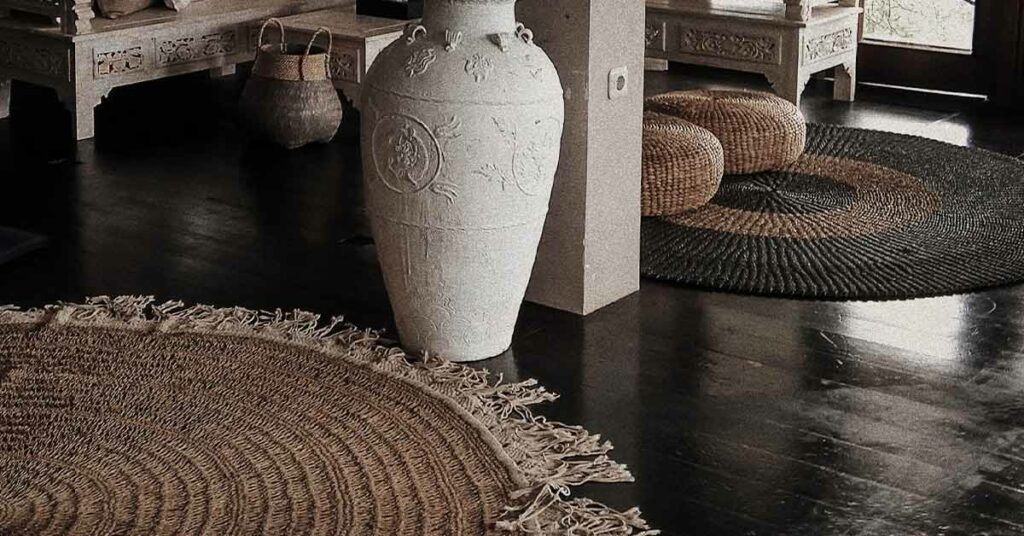
Plank-sized wood-look tiles are inspired by the warmth, elegance, and the unique character of hardwood flooring. In terms of durability, they are a popular, game-changing flooring material. Solid and engineered hardwood floors continue to be highly desired flooring options, as well. Are you on the fence about selecting real wood or wood-look tile floors? If so, you may find the following information helpful. How important is it to you that the floor will feel comfortable underfoot? Do you want something durable and easy to maintain? There are so many factors to consider before you select your material and hire an installer. Let’s consider the most important ones.
About Hardwood Floors
Hardwood floors are either solid wood or engineered wood. The type of tree that wood flooring material comes from is called the wood species. Solid wood floors are made of the wood species the whole way through. Engineered floors have a wood veneer that is bonded to plywood. People tend to think of engineered wood as “fake” wood, but this is not true. With engineered wood, the uppermost layer is the same as solid wood, only much thinner.
Non-wood materials with a wood-like appearance include laminate, vinyl, luxury vinyl plank (LVP), and tile. The most durable of these is tile.
About Wood-Look Tile
Wood-look tile is porcelain or ceramic tile with a high-resolution digitally printed surface. The designs of wood-look tile are inspired by the appearance of real wood, from grain patterns and color variations to texture. Some wood-look tiles even have subtle, purposefully placed imperfections, reminiscent of real wood.
Aesthetic Appeal
The wood species heavily influences the overall look and feel of hardwood floors. Popular options such as oak, maple, walnut, cherry, hickory, and birch offer distinctive grain patterns that can add help shape the character of a space. For each wood species, there is a comparable wood-look tile design that captures the essence of real wood and provides a similar aesthetic experience.
Choosing the right color and finish of flooring material is crucial in achieving the look you want. With wood floors, you have the option to stain and finish the wood to influence its color and sheen. Wood floor finishes can be transparent or opaque or something in between. A wide range of colors, including warm browns, rich reds, golden hues, and cool greys, are available, whether you are choosing real wood or wood-look tile. Obviously, since wood-look tile comes pre-finished, staining and finishing are irrelevant.
Wood floors offer a distinctive tactile advantage over tile. The range of possibilities for the texture of wood finishes goes from smooth to wire brushed to distressed/aged. Although wood-look tile has come a long way, if you look closely, you will be able to tell that wood-look tile is not real wood.
Comfort
Wood flooring offers a softer, warmer feel compared to tile. It absorbs some impact and has a natural give that people with foot or joint pain appreciate. The comfort level of wood-look tiles can be easily improved with anti-fatigue mats, area rugs, and underfloor heating systems. Some people appreciate the cool feeling of the tile during warmer weather.
Durability
Certain wood species are more susceptible to damage due to their softer nature. These softer wood species, such as pine, fir, and American walnut, are more prone to scratches, dents, and surface wear over time. Harder wood species, like oak, ash, or teak are more resistant to such damage. Even so, they will need to be sanded and refinished periodically.
Wood-look tile can take years or even decades of traffic and use without showing any significant signs of wear. Although tile is generally more durable than wood, if it is damaged, it is more difficult to repair. Porcelain wood-look tiles, although not impervious to damage, offer a lot more durability than ceramic.
Where will the floor be installed?
Wood-look tile offers many advantages compared to wood floors regarding concerns like humidity levels, temperature fluctuations, UV exposure, and moisture.
Climate Control
One might imagine that in a day and age when most Central Coast of California homes are climate-controlled, moisture and humidity levels would be irrelevant to flooring material decisions. However, power outages and technical problems with HVAC systems can lead to wood flooring failures. Tile, on the other hand, can withstand excessive humidity and temperature fluctuations. It expands and contracts, but if it is properly installed, any movement will be insignificant to the structural integrity of the installation.
Hardwood flooring performs best in environments with controlled temperature and humidity levels. Wood can undergo considerable expansion and contraction compared to tile. Excessive humidity can cause warping, cupping, and buckling of wood planks. The boards swell and push against each other or dry out and shrink. Gaps can occur when individual hardwood boards separate. Properly installed wood floors are less likely to develop these problems, but in certain circumstances, even properly installed floors will fail.
UV Exposure
Wood-look tiles are generally UV resistant. Homeowners do not need to worry about taking any extra measures to protect UV-resistant material from exposure to sunlight.
Hardwood floors are sensitive to UV exposure. Areas of the floor exposed to a lot of sunlight can fade or discolor over time. There are a couple of ways to avoid this problem. Cover windows during hours of intense sunlight and apply a finish or coating that has UV-protection properties to the floor.
Moisture
Wood-look tile floors can provide exceptional resistance to moisture. Tile can be installed below grade, meaning it can be installed in a basement or on a ground floor that is lower than the ground outside, where moisture levels can be greater. In areas such as bathrooms or kitchens where water exposure is likely, wood-look tile floors are an excellent material choice. Think about it. Tile is routinely installed in swimming pools and hot tubs. In most cases, if the tile is properly installed, moisture is not a concern.
Wood flooring is susceptible to moisture damage. As such, hardwood floors are typically recommended only for above-grade installations. There is a reason you will not find wood floors in bathrooms and kitchens very often. Wood floors are not suitable for areas with a lot of water exposure.
Sanitation
If something is porous, this means that it has tiny holes that can absorb contaminants introduced by splatters and spills. Wood is porous. Some wood species are more porous than others. Although wood-look tile generally has low porosity, the grout lines between the tiles can be porous. Properly sealed and protected porous surfaces are less susceptible to embedded dirt, grime, and contaminants. Both wood floors and wood-look tile floors, if properly maintained, can provide a relatively sanitary surface. Of the two options, tile is more sanitary.
Care and Maintenance
Traffic, use, and normal wear will become evident with wood floors much sooner than with wood-look tile floors. Accidental damage can immediately take a toll on the appearance of either type of flooring.
Wood-Look Tile Floors
With proper care and maintenance, wood-look tile can look as fresh, clean, and inviting as the day it was installed.
Wood-look tile care principles are the same as that of other types of tiles:
- Stay a step ahead of contaminants and cleaning problems by using walk-off mats and resealing grout lines, as needed.
- Use appropriate cleaners and cleaning implements.
- Avoid using harsh chemicals, abrasives, and soap-based cleaners.
- Clean spots and spills before they become stains.
- Use poultices to treat stains.
- Regularly clean, sweep, and spot mop.
- Have your floors periodically professionally cleaned.
- Contact a professional tile restoration contractor to have scratches, chips, cracks, breaks, stubborn stains, and other damage repaired.
Our article, How Do I Keep My Tile Looking New After Installation? is loaded with more valuable tile care and maintenance information.
Real Wood Floors
Wood floor care is similar to that of wood-look tile floors:
- Stay a step ahead of contaminants and cleaning problems by using walk-off mats.
- Use appropriate cleaners and cleaning implements.
- Avoid using harsh chemicals and abrasives.
- Clean spots and spills before they become stains.
- For stains, use specialized wood floor stain removers. Contact a wood floor professional, if needed.
- Regularly vacuum or sweep. Spot mop as needed but be careful to avoid using too much water. Your mop should be moist or damp, not wet and dripping.
- Have your floors periodically professionally refinished and resealed.
Cost
Wood floors usually cost more than tile floors, but there are many factors that can influence cost. To learn more, read our article, How Materials and Other Factors Influence Labor Costs.
Feel free to reach out if you have any questions are concerns about real wood vs wood-look tile floors that are not addressed in this article. We want to help you select the flooring material that suits both your unique style and your practical needs, even if you do not choose wood-look tile.
by Alice Dean
Copher Tile & Stone proudly stays up to date on wood-look tile floor installation with ongoing education with Mapei Technical Institute, Ardex Academy, the National Tile Contractors Association, Laticrete, and Schluter. Copher is a Certified Tile Installer (#1644).

